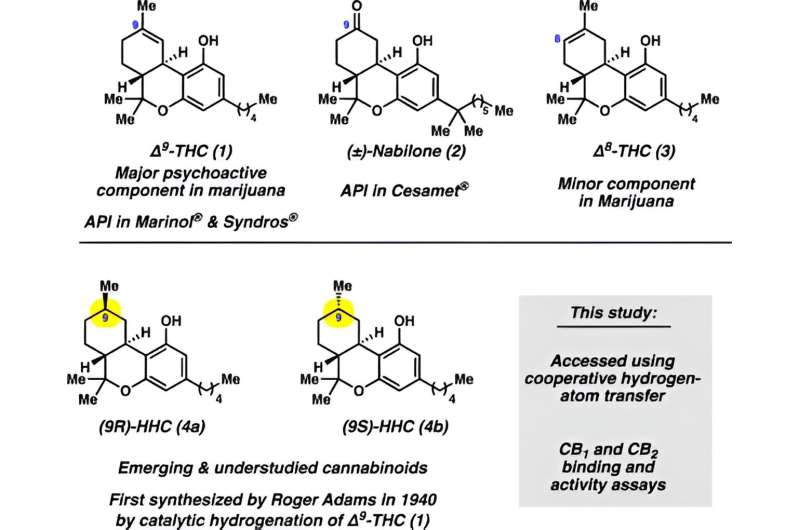
With the legalization of marijuana in many parts of the country, a wide range of products containing THC, the psychoactive compound found in marijuana, as well as other cannabinoids derived from THC or the cannabis plant, have flooded the market. This creates a challenge for regulators as these new products often contain cannabinoids with unknown neurological and physiological effects.
Cannabinoids refer to a group of substances that bind to cannabinoid receptors in the body and brain. While THC is the most well-known cannabinoid found in the cannabis plant, the newer products sold in dispensaries often contain other classes of cannabinoids that are not well-studied in terms of their effects on the body.
UCLA chemist Neil Garg and his team are conducting research on emerging cannabinoids to ensure the safety of consumer products and to assist government agencies in developing evidence-based regulations for the growing cannabis industry. In their recent study published in ACS Chemical Biology, Garg and his colleagues focus on a specific class of emerging cannabinoids known as hexahydrocannabinols (HHCs) and evaluate their binding capabilities to receptors in the human body.
“Despite the widespread availability of these compounds, there hasn’t been sufficient research conducted to fully understand their basic binding assays in humans,” explains Garg, UCLA’s Kenneth N. Trueblood Professor of Chemistry and Biochemistry. “This highlights the need for more fundamental research in this rapidly evolving field.”
The study reveals that HHC products on the market typically contain a mixture of two different isomers of the HHC molecule. While both isomers bind to cannabinoid receptors like THC, only one isomer has effects comparable to THC. This suggests that products containing only this specific isomer would be more likely to deliver the desired psychoactive effects.
In addition to their findings on the binding capabilities of HHCs, Garg and his team also introduce a safer method for synthesizing these cannabinoids. Unlike the commonly used catalytic hydrogenation method, which involves the use of potentially toxic heavy metals and can lead to inconsistent ratios of isomers, Garg’s method relies on a chemical process called hydrogen atom transfer. This method produces a higher proportion of the biologically active isomer of HHC, ensuring greater consistency in the composition of HHC products.
Garg emphasizes the necessity of further research in understanding cannabinoids and their effects to establish fair regulations and ensure consumer safety. He states, “These studies are crucial if we are to have laws and policies that are fair and allow for consumer safety, while allowing scientists and society alike to explore the potential therapeutic effects of new cannabinoids.”
The paper also notes that while there is a common belief that HHCs are legal under federal law, the U.S. Drug Enforcement Agency considers them illegal.
More information:
Daniel J. Nasrallah et al, Studies Pertaining to the Emerging Cannabinoid Hexahydrocannabinol (HHC), ACS Chemical Biology (2023). DOI: 10.1021/acschembio.3c00254
Provided by
University of California, Los Angeles
Citation:
Consumers who buy cannabis products containing HHCs could be getting less than they hoped for (2023, August 14)
retrieved 14 August 2023
from https://phys.org/news/2023-08-consumers-buy-cannabis-products-hhcs.html
This document is subject to copyright. Apart from any fair dealing for the purpose of private study or research, no
part may be reproduced without the written permission. The content is provided for information purposes only.
Denial of responsibility! TechCodex is an automatic aggregator of the all world’s media. In each content, the hyperlink to the primary source is specified. All trademarks belong to their rightful owners, and all materials to their authors. For any complaint, please reach us at – [email protected]. We will take necessary action within 24 hours.

Jessica Irvine is a tech enthusiast specializing in gadgets. From smart home devices to cutting-edge electronics, Jessica explores the world of consumer tech, offering readers comprehensive reviews, hands-on experiences, and expert insights into the coolest and most innovative gadgets on the market.


